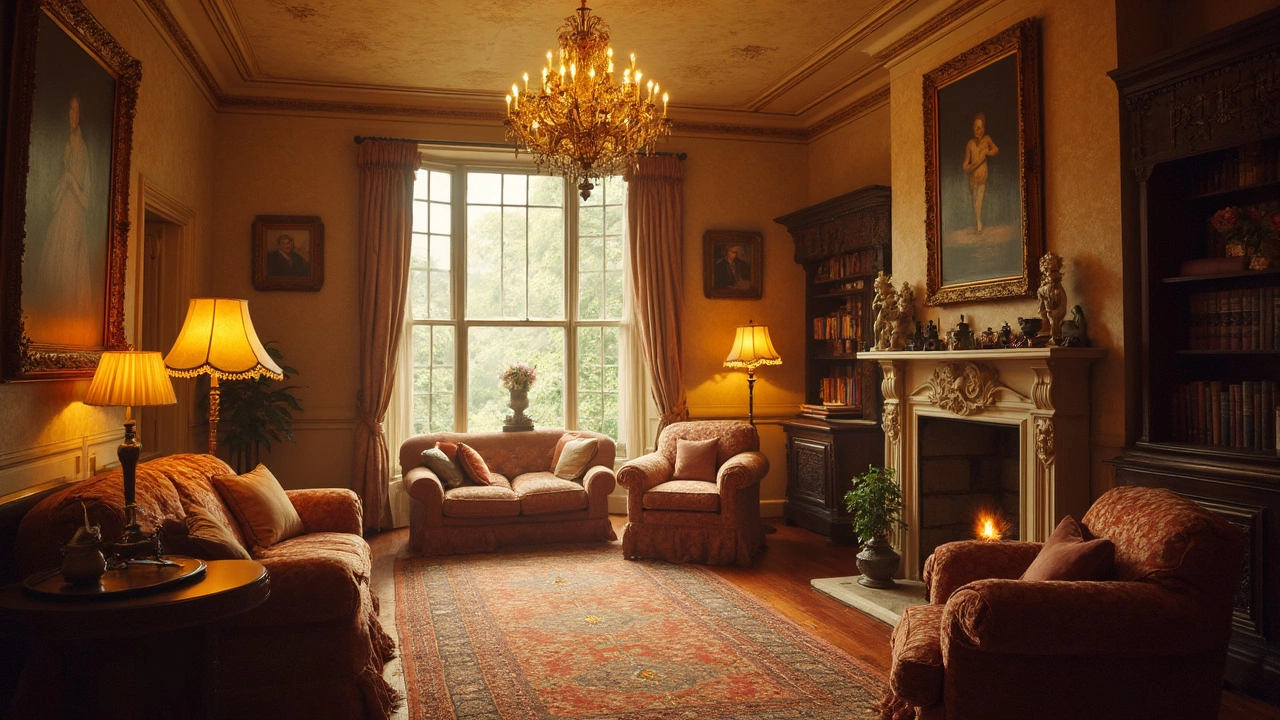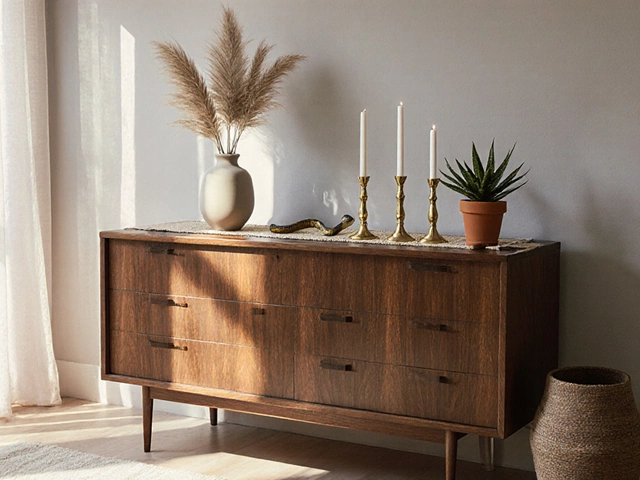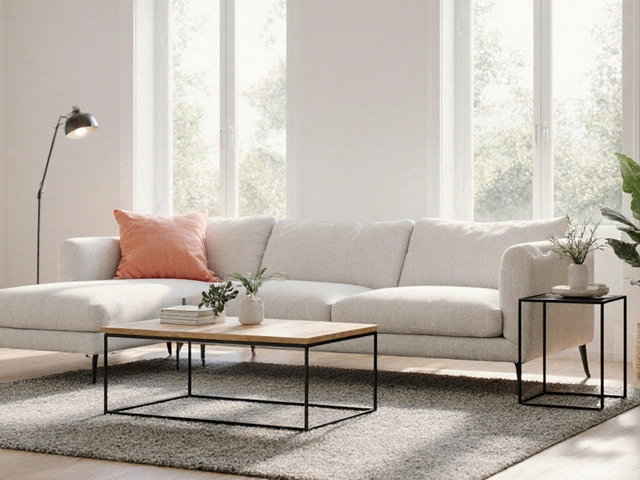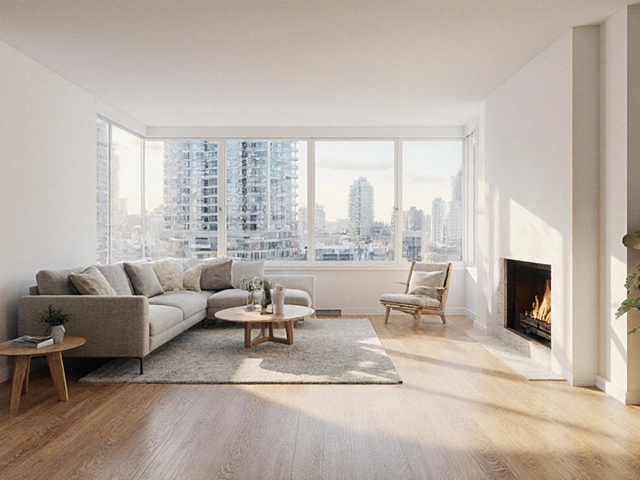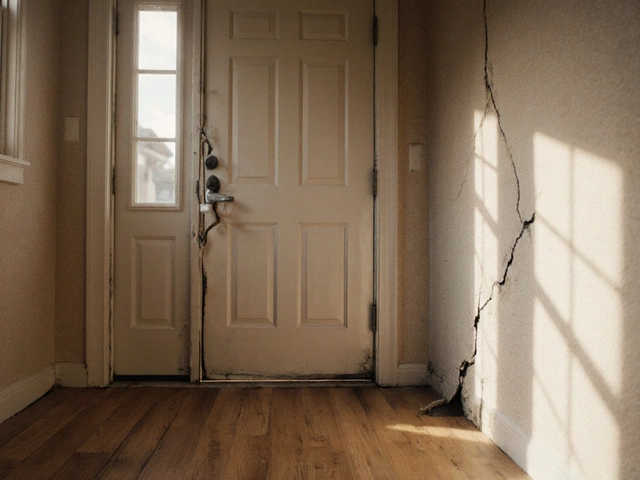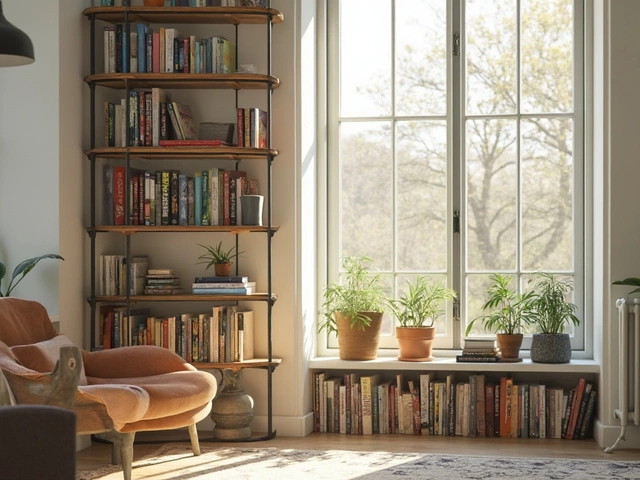Ever walk into a room and feel instantly relaxed or energized? Often, that's the magic of good lighting at work. Whether you're trying to create a cozy reading nook or a vibrant kitchen space, getting your home's lighting right can make all the difference.
First off, you'll want to get familiar with the three types of lighting: ambient, task, and accent. Ambient lighting is your main light source, setting the tone for the room. Task lighting focuses on specific areas where activities like cooking or reading happen. And accent lighting is all about adding drama or emphasizing a favorite feature, like artwork.
Layering these types might sound fancy, but it's pretty simple. Start with ambient light for overall illumination, then add task lighting where practical activities happen. Finally, sprinkle in some accent lighting to give the space personality.
And let’s not forget bulb choices! Go for LEDs if you want energy efficiency and great light quality. On top of that, adjusting light temperature can change a room’s vibe—warmer lights often feel cozier, while cooler tones bring a fresh, lively feel.
- Understanding Lighting Types
- Mastering the Art of Layering Light
- Selecting the Right Bulbs
- Harnessing Natural Light
- Strategic Fixture Placement
- Smart Lighting Choices for Different Rooms
Understanding Lighting Types
Creating the perfect atmosphere at home often begins with understanding the three main types of lighting: ambient, task, and accent. Each has its unique role in making a room functional and inviting.
Ambient Lighting: Setting the Tone
Ambient lighting is your primary source of illumination, intended to light up a room uniformly. Think of it as the foundation of your home lighting scheme. It usually comes from overhead fixtures like chandeliers, ceiling or recessed lights. The goal is to provide general brightness, so the space feels inviting and safe. A cozy living room benefits immensely from a well-placed chandelier or downlight, setting the stage for relaxation.
"Good lighting isn't about illuminating everything equally; it's about layers. Each type of lighting serves a purpose." - Jane Thompson, Lighting Specialist
Task Lighting: Shining a Light on Activities
Task lighting is all about providing focused illumination to help you carry out specific activities like reading, cooking, or working. It's essential for spaces where precision and clarity are required. Desk lamps, under-cabinet lights in the kitchen, and vanity lights in the bathroom are all examples. Home improvement enthusiasts often recommend adjustable fixtures for task lighting—like a reading lamp that can swivel to point exactly where you need.
Accent Lighting: Adding Drama
Accent lighting works like a spotlight on the stage of your room, adding glamour and intrigue by highlighting key features like artwork, plants, or architectural details. This type usually requires more focused beams, often three times brighter than ambient lights. Imagine how a couple of well-placed spotlights can transform a dull corner into a gallery-like feature wall!
In essence, mixing these lighting types artfully can transform your home lighting into an experience. As Thomas Edison once put it, "To invent... means to see differently." So, mix and match to find your perfect balance.
Mastering the Art of Layering Light
Layering lighting is a game-changer for any room, and it's easier than it sounds. Imagine lighting as a cake—you need all the layers to make it complete. Each type of light plays a role, and when they come together, they create the perfect atmosphere.
Ambient Lighting: The Foundation
Ambient lighting, or general lighting, is your base layer. Think of it as the first coat of paint—essential, but not the whole picture. This can be anything from a ceiling light to a big floor lamp. It sets the mood and makes sure you can see where you're going.
Task Lighting: Focus Where Needed
Next up is task lighting. This is all about function, focusing light where you need it most. Whether you’re chopping veggies in the kitchen or working at your desk, task lighting helps you see better and reduces eye strain. Desk lamps, under-cabinet lights, and pendant lights over the kitchen island are prime examples. They're practical, but they can look great too!
Accent Lighting: Add Some Drama
Now for the fun part—accent lighting! This layer adds depth and highlights specific features like art pieces, plants, or architectural details. It's all about adding some flair to your space. Think about using LED strips behind a TV, spotlights on a painting, or track lights to highlight a textured wall. These aren't just light sources; they're mood enhancers.
By layering these three types, you can adjust your room's light to fit any mood or occasion. Plus, it's not just about aesthetics—using multiple layers can actually save energy. By using task and accent lights, you avoid using full overhead lighting constantly.
Bonus Tip: Dimmer Switches
Want a secret weapon for ultimate control over your light layers? Install dimmer switches. They let you adjust the brightness based on the time of day or activity, adding an extra level of customization to your home lighting setup.
Making the most of your lighting doesn't have to be complicated. Once you get the hang of layering, your home will look and feel a whole lot better.
Selecting the Right Bulbs
Choosing the right light bulbs can be more challenging than you'd think, but it's all about knowing what you need. You'll want to consider brightness, energy efficiency, and the ambiance each bulb can create. Let's break it down.
Brightness and Wattage
First things first, when people mention a bulb's strength, they're often talking about watts. But in home lighting, brightness is actually measured in lumens. For example, a standard living room might need around 2,000-3,000 lumens of ambient lighting to feel properly lit.
Here's a quick breakdown of how lumens translate to different spaces:
- Living Room: 1,500-3,000 lumens
- Dining Room: 3,000-6,000 lumens
- Bedroom: 1,000-2,000 lumens
- Kitchen: 3,000-6,000 lumens
Energy Efficiency with LEDs
If going green is your thing (or you just want to save on those electric bills), then LEDs are your best bet. They use a fraction of the electricity compared to the old incandescent bulbs and last waaaay longer. Plus, LEDs are available in a range of styles and brightness levels to perfectly match your home improvement goals.
Warm vs. Cool Light
The mood of a room is significantly influenced by the bulb's color temperature, measured in Kelvin. Warmer lights (around 2700K-3000K) are great for bedrooms and living rooms because they give a cozy vibe. On the flip side, cooler lights (around 3500K-4100K) work better in workspaces or bathrooms, making everything sharp and vibrant.
Smart Bulbs for Extra Flexibility
Feeling techy? Smart bulbs can be a game-changer. They let you play around with brightness levels, color temperatures, and even colors if you're into snazzy lighting effects. It’s becoming an integral part of interior design. A side perk? Control them with your phone or voice commands—great for showing off when friends come over!
| Bulb Type | Lifespan (hours) | Energy Use (watts) |
|---|---|---|
| Incandescent | 1,000 | 60 |
| CFL | 8,000 | 14 |
| LED | 25,000 | 10 |
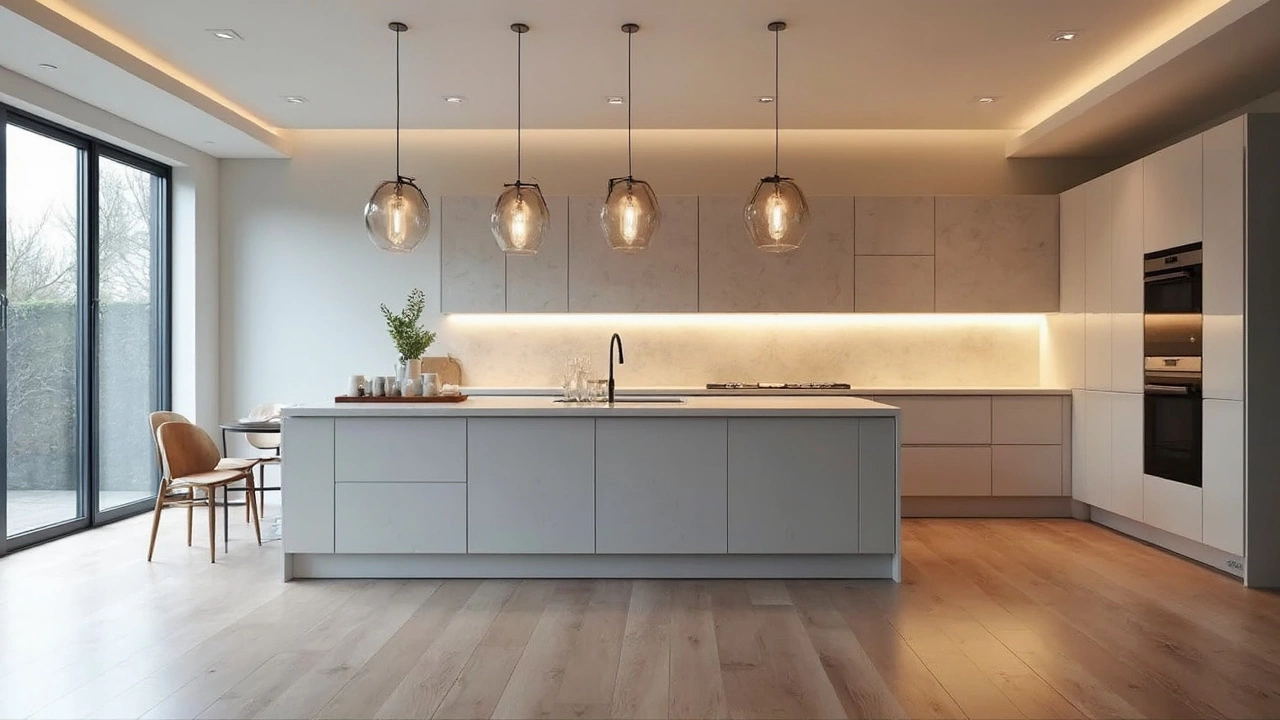
Harnessing Natural Light
Natural light can be a game changer in home lighting, making any room look brighter and more inviting without spending a dime on your energy bill. But how do you maximize it? Let's dive into some practical steps to bring more of that glorious sunlight into your home.
Position Your Furniture
Start by examining how your home lighting setup interacts with windows and natural sources of light. If you've got a big comfy couch blocking a large window, consider rearranging it so nothing obstructs the flow of light.
Use Light Fabrics
Heavy drapes might look luxurious, but they're also great at keeping light out. Instead, opt for sheer curtains or blinds that can easily be adjusted. This allows you to control the light levels without shutting it out completely.
Mirrors Are Your Friends
Strategically placed mirrors can double the amount of sunlight entering your room. Place a large mirror on the opposite wall of a window, and you'll find the room not only seems bigger but brighter too.
Paint Choices Matter
Consider lighter shades of paint for walls, especially in rooms where you want to enhance natural light. Lighter colors reflect light, making spaces feel more luminous.
Trim Those Trees
If you've noticed a lot of shade creeping in, it might be due to overgrown trees or shrubs outside. By trimming them back, you could improve the natural light entering your home.
| Factors | Impact on Natural Light |
|---|---|
| Furniture Position | High |
| Window Treatments | Medium |
| Wall Colors | High |
| Exterior Landscaping | Medium |
These ideas won't just enhance your current home lighting setup; they'll transform how you feel in your space. With a few adjustments, you'll be basking in sunlight from the comfort of your own home.
Strategic Fixture Placement
Ever wonder why certain rooms feel more inviting than others? A huge part of that is where the lights are placed. It's not just about brightness; it's about balancing the light throughout the space.
Balance and Symmetry
Start with symmetry. If you've got a long dining table, try placing a fixture like a pendant light directly over it. This not only highlights the table but also creates a focal point. In addition, if you're using floor or table lamps, try to position them evenly around the space for a balanced glow.
Height Matters
Install fixtures at the right height. For example, ceiling lights in the living room should be hung about seven feet above the floor. In the kitchen, pendants above an island should sit 30-36 inches above the countertop. This offers ample functional light without causing glare.
Utilizing Corners and Nooks
Aim to fill dark corners with some kind of home lighting. A floor lamp or a sconce can make these areas part of the room again, ensuring the space feels complete. Plus, this is an easy hack to make rooms appear larger than they are.
Bathrooms and Small Spaces
For smaller spaces like bathrooms, consider using layered light. Wall sconces on either side of a mirror provide excellent task lighting and reduce shadows. Overhead lights add ambient lighting, ensuring no part of the space is left in the dark.
Passageways and Hallways
Hallways are often neglected, but placing ceiling fixtures consistently along the path can create a well-lit passage. Motion sensors can also be a great addition here—they save energy and add convenience.
Considerations for Different Floors
If your home has different floorings or is multilevel, strategic fixture placement can help differentiate spaces or provide cohesion. For homes with stairs, a series of low-profile wall lights can enhance safety and add aesthetic appeal.
Strategically placed fixtures help create a perfect lighting scheme that suits both your home's style and your personal needs. Don't just light a space—design it with light.
Smart Lighting Choices for Different Rooms
Your home is your haven, and each room deserves its own lighting treatment. When it comes to home lighting, one size definitely doesn't fit all. Let's break it down room by room, so you can light up your space exactly how you like it.
Living Room
The living room is usually a multi-use space. Whether you’re watching TV or hosting friends, flexibility is key. Use dimmers for your main lights to adjust the mood as needed. Adding floor or table lamps can give you extra task lighting for reading or hobbies. According to lighting expert, John Cullen, "A well-planned lighting scheme can transform a space; it should highlight your home’s best features and create a welcoming atmosphere."
Kitchen
In the kitchen, focus on bright, energy-efficient lighting that covers both prep areas and dining spots. Under-cabinet lights save the day when you need to see exactly what you’re chopping. Consider pendant lights above the island for a stylish yet functional touch.
Bedroom
Your bedroom should be your peaceful retreat. Opt for softer lighting to help you relax. Use bedside lamps for reading, and maybe go for smart bulbs you can control from your phone without leaving the comfort of your bed.
Bathroom
No one wants dark circles under their eyes in the morning. Go for bright, even lighting here, especially around the mirror. The vanity needs some focused lighting, while a softer ceiling light can ensure the whole room feels fresh.
Home Office
If you’ve joined the work-from-home trend, you know good lighting can make or break productivity. Aim for sufficient task lighting that minimizes glare on screens. Pair a desk lamp with overhead lighting for a well-lit space throughout the day.
Dining Room
A chandelier or pendant over the dining table creates a focal point. Dimmer switches are a must for creating the perfect ambiance during meals, whether it's a holiday feast or a weekday pizza night.
Smart lighting doesn’t just make your home look better, it makes it feel better. With the right lights in the right places, your home can transform into a more functional, inviting space.
